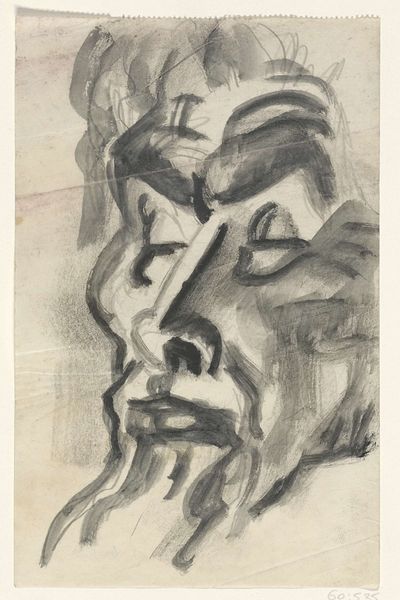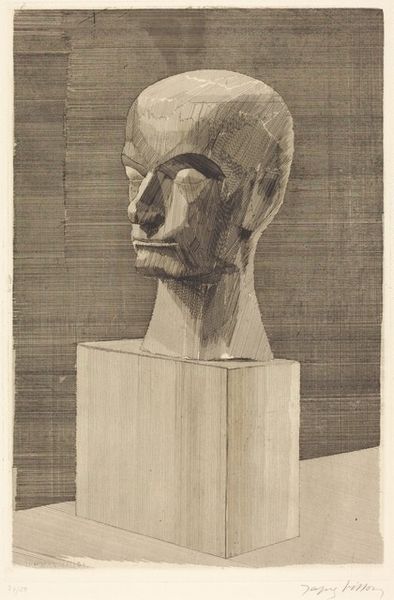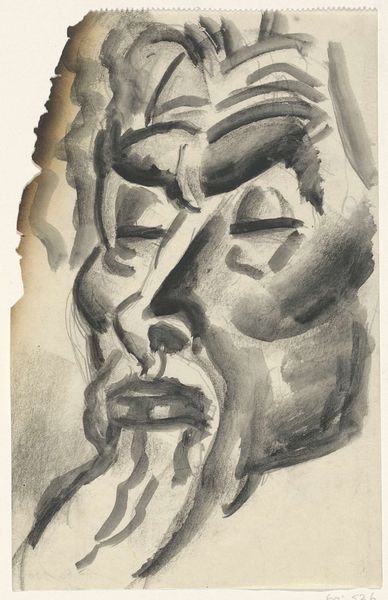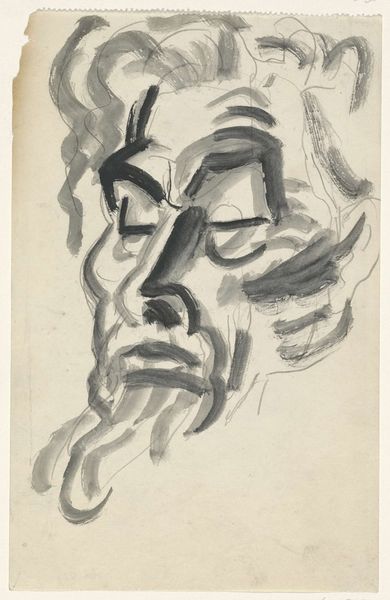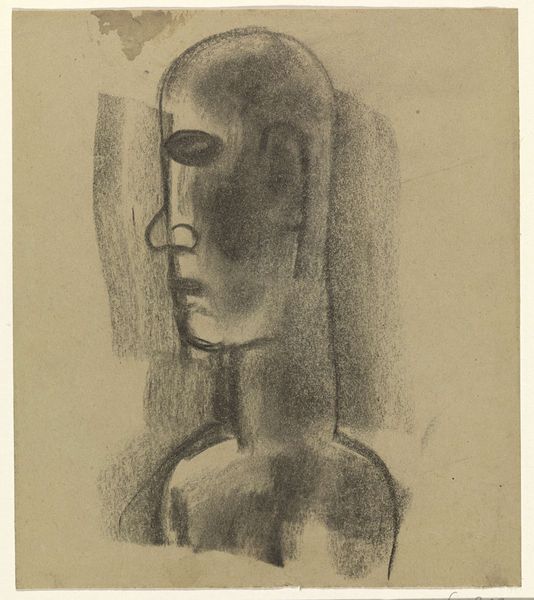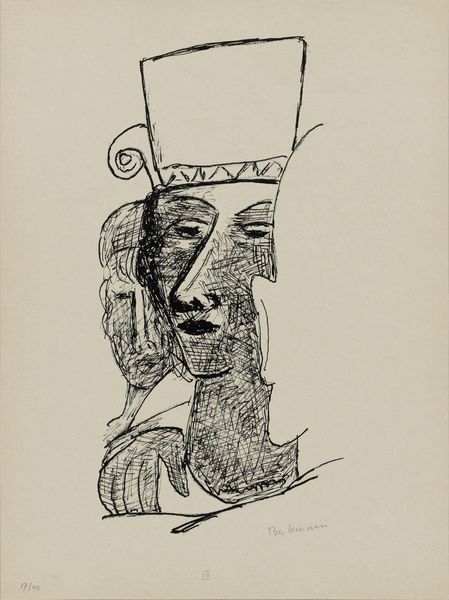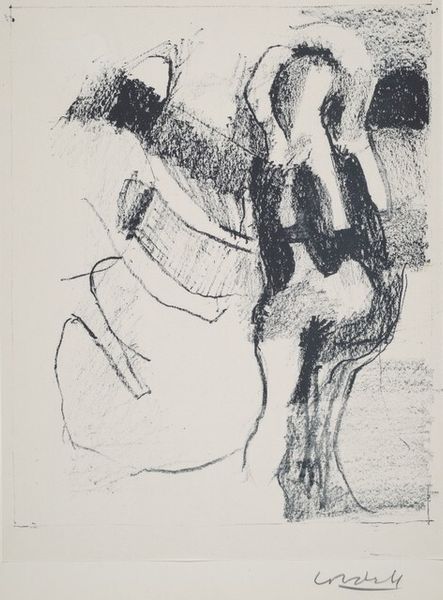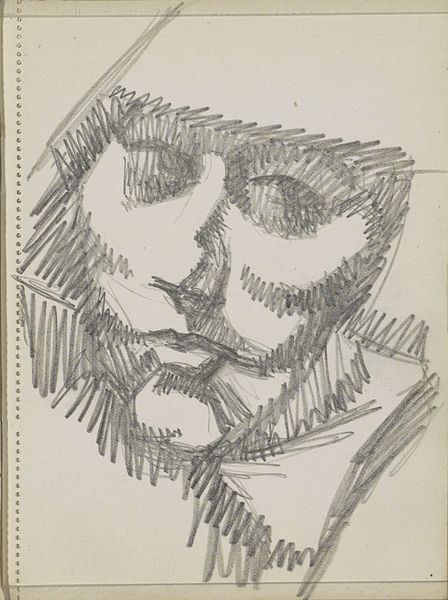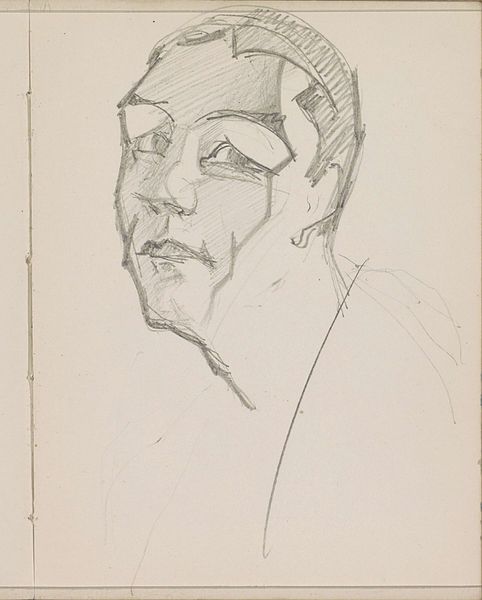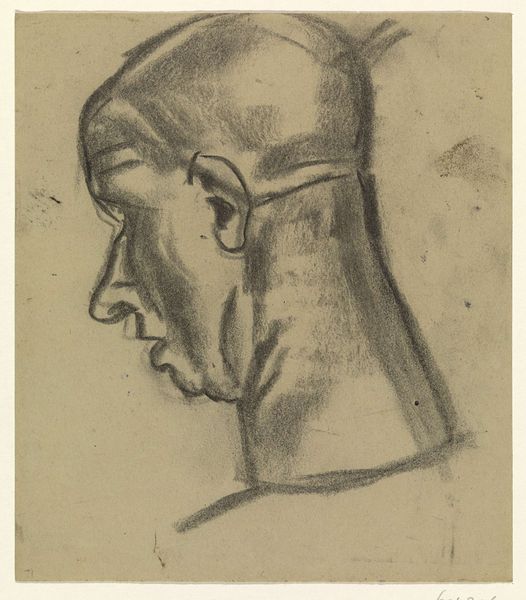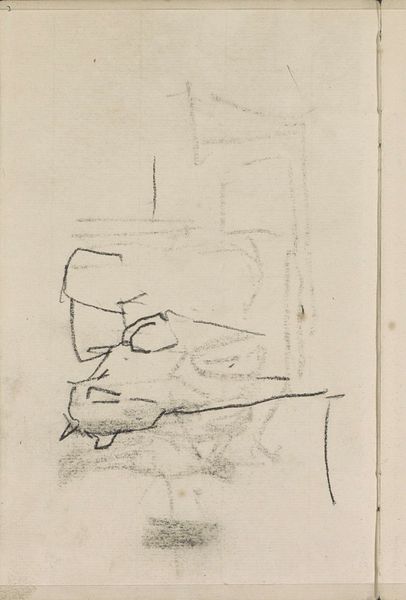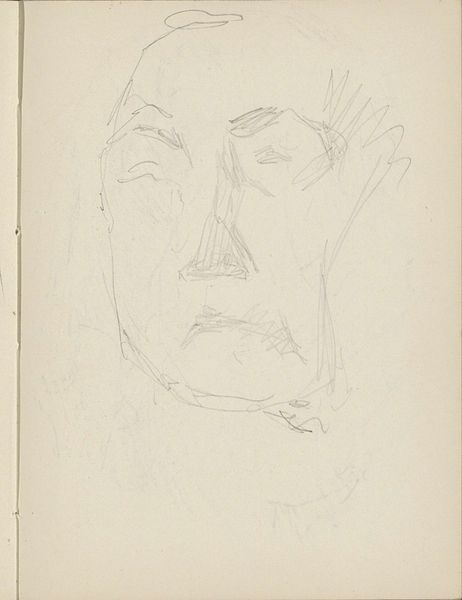
drawing, pencil
#
portrait
#
drawing
#
pencil drawing
#
pencil
#
portrait drawing
Dimensions: height 212 mm, width 163 mm
Copyright: Rijks Museum: Open Domain
Editor: This pencil drawing, “Head of a Man, Seen from Behind and in Profile,” by Leo Gestel, dates from between 1925 and 1927. There's a certain melancholy conveyed through the starkness of the shading and the averted gaze. What is your perspective on how this piece engages with the visual and cultural landscape of its time? Curator: The image is rendered in pencil with considerable realism despite visible strokes, but it is difficult to identify the man himself. I would suggest looking at it from the viewpoint of how the head portrait, typically used for communicating status, power and the uniqueness of the sitter, here anonymizes the man, perhaps presenting him as a common laborer. How does this resonate with the socio-political atmosphere of the interwar period? Editor: That's interesting! I hadn't thought about the contrast between the traditional function of portraiture and the anonymity here. Considering the post-World War I context, do you think Gestel might have been making a statement about the common man's role in society, or perhaps the psychological toll of that period? Curator: Precisely! Artists often grapple with societal shifts. By depersonalizing the subject, Gestel might be highlighting the collective experience of trauma or the changing social dynamics. Consider the rise of industrialization and mass production. How might these influence the artistic representation of the individual? Does it show resistance against traditional artistic notions or adapt a modern view? Editor: I see. It’s like the drawing invites us to contemplate not just an individual, but the collective experience of a generation marked by conflict and change. That is thought provoking, thank you. Curator: My pleasure. Looking closely at historical context, art can transform into powerful socio-political narratives.
Comments
No comments
Be the first to comment and join the conversation on the ultimate creative platform.
